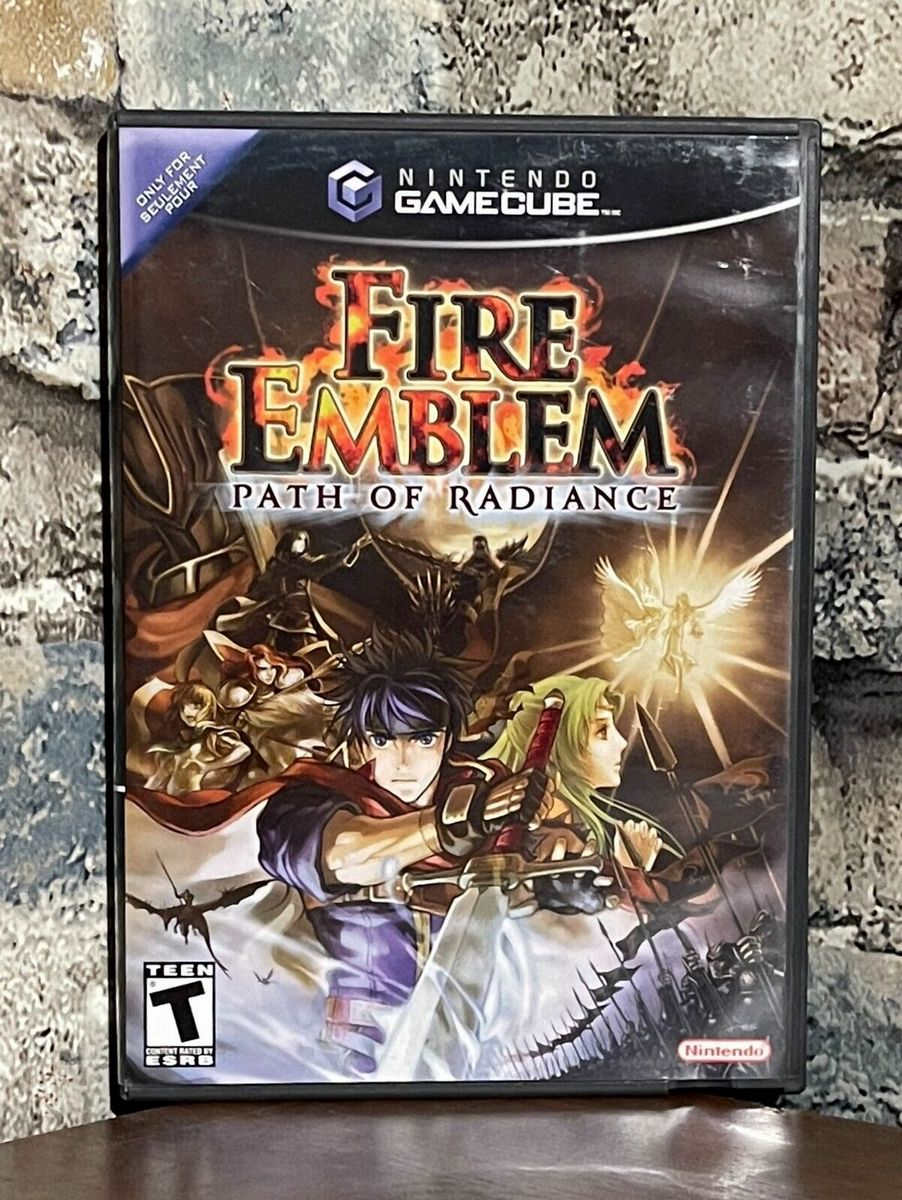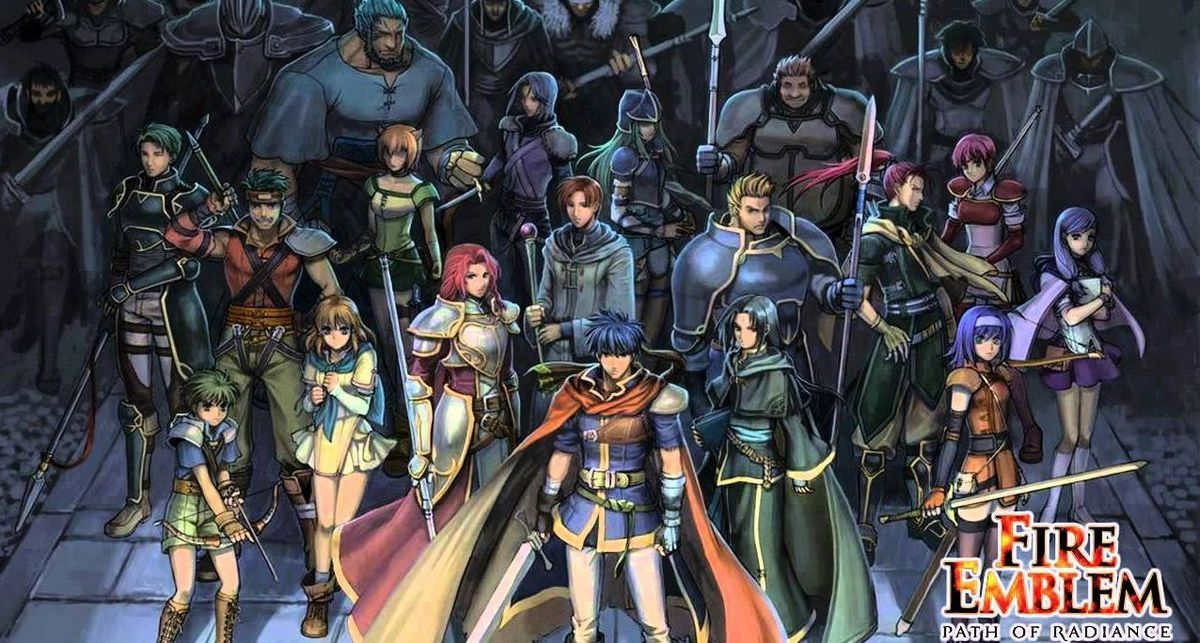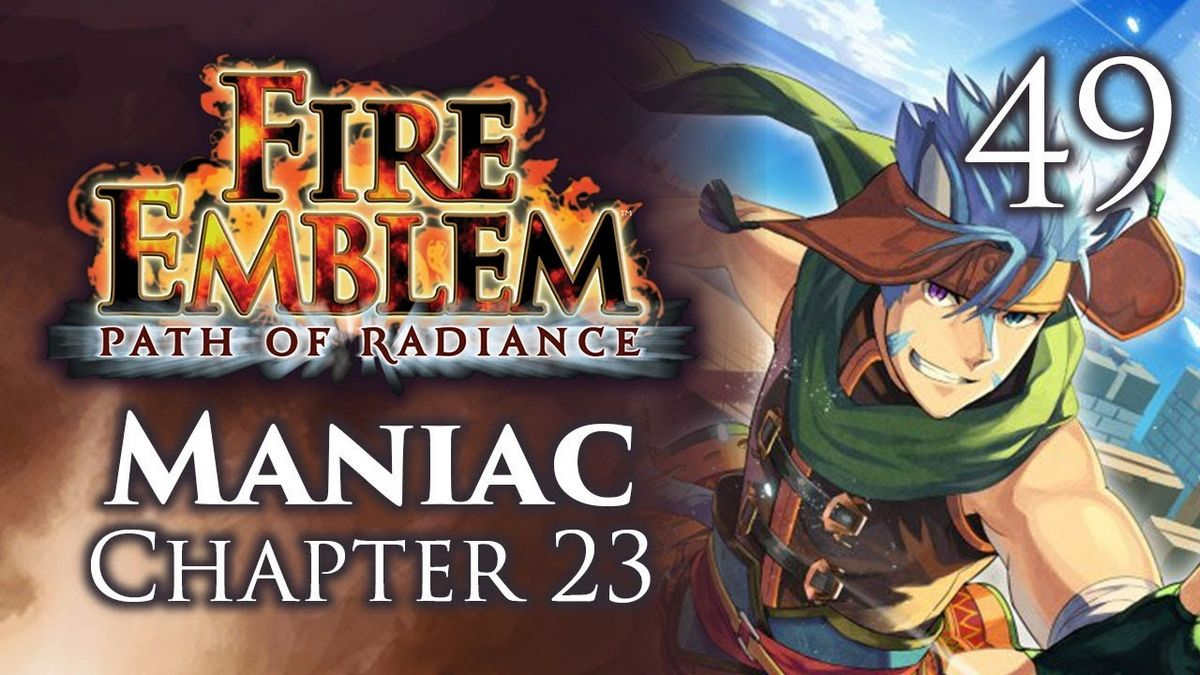Fire Emblem: Path of Radiance is a tactical role-playing game developed by Intelligent Systems and published by Nintendo. Released in 2005 for the Nintendo GameCube, it marked the first console entry in the Fire Emblem series since Thracia 776 in 1999. The game follows Ike, a young mercenary who becomes entangled in political intrigue and battles to protect his homeland from invasion.
The gameplay mechanics of Fire Emblem: Path of Radiance are centered around turn-based battles on grid maps. Players move their units across the map and engage enemy forces using a variety of weapons and spells. Each unit has unique strengths and weaknesses, with different classes offering distinct abilities such as healing magic or ranged attacks.
One notable feature of Fire Emblem: Path of Radiance is its support system, which allows players to build relationships between characters through dialogue interactions outside of battle. These relationships can lead to new abilities or story paths as well as providing insights into each character’s backstory.
Another standout element of Fire Emblem: Path of Radiance is its narrative depth. The game explores themes such as racism, class conflict, and moral ambiguity within a complex political landscape that evolves over time. Cutscenes help drive this narrative forward while also showcasing impressive graphics for its time.
Overall, Fire Emblem: Path of Radiance offers an engaging mix of tactical combat gameplay alongside deep character development and nuanced storytelling elements that set it apart from other games in the genre.
- 1) The mechanics of Fire Emblem: Path of Radiance’s combat system
- 2) A detailed analysis on the story and character development within the game
- 3) The impact of Fire Emblem: Path of Radiance on the overall franchise
- 4) Exploring the class and skill systems in Fire Emblem: Path of Radiance
- 5) A review on how well the game has aged over time, including graphics and gameplay improvements or setbacks
- 6) Analysis on how difficulty modes affect gameplay experience in Fire Emblem: Path of Radiance
- 7) Comparing and contrasting Fire Emblem: Path of Radiance to other games within its genre
- 8) An examination of soundtrack composition in relation to story progression withinFire Emblem: Path of Radiance
1) The mechanics of Fire Emblem: Path of Radiance’s combat system
Battles take place on a grid-based map where each unit, including both player-controlled characters and enemy units, occupies one square at a time. Combat is turn-based and occurs when two opposing units occupy adjacent squares.
When combat is initiated, the game calculates several factors to determine the outcome of the battle. These include the stats of each unit such as their strength, skill, speed, and defense. The weapon triangle also plays a significant role in determining damage output. Weapons are categorized into three types: swords beat axes, axes beat lances, and lances beat swords.
In addition to standard battles between individual units, Fire Emblem: Path of Radiance also includes “support” mechanics where characters can build relationships that provide bonuses during battles such as increased accuracy or critical hit chance. The game also features an extensive class system where characters can be promoted to more advanced classes with better stats and abilities.
Overall, Fire Emblem: Path of Radiance’s combat system offers a deep level of strategy for players who enjoy tactical gameplay mechanics. With its focus on precision planning and execution coupled with support mechanics that encourage strong character relationships, it remains one of the most engaging turn-based RPGs available today.
2) A detailed analysis on the story and character development within the game
The game features an engaging storyline with well-developed characters that provide depth and meaning to the gameplay experience. At its core, Fire Emblem: Path of Radiance explores themes such as racism, classism, and power dynamics.
The story follows Ike, a young mercenary who becomes embroiled in a war between two kingdoms. As he progresses through the game’s main campaign, players learn more about his backstory and motivations. Alongside him are a diverse cast of characters with their own stories to tell. From aristocrats struggling to come to terms with their privileged upbringing to former slaves fighting for justice, each character offers something unique to the narrative.
The character development within Fire Emblem: Path of Radiance is exceptionally well done. Players witness each character grow over time as they face challenges that test their beliefs and convictions. Even NPCs (non-playable characters) have fully fleshed out backstories that help create an immersive world rich in lore and history. Overall, this attention to detail elevates Fire Emblem: Path of Radiance from simply being another tactical RPG into something truly special – a masterpiece worthy of its place among gaming’s most beloved titles.
3) The impact of Fire Emblem: Path of Radiance on the overall franchise
It was not only the first game in the series to be rendered in full 3D graphics, but also introduced several new gameplay mechanics that have since become staples of the series.
One of the most notable additions was the introduction of base conversations, which allowed players to interact with their units outside of battle and learn more about their backstories and motivations. This feature added an extra layer of depth to character development and engagement with players.
Path of Radiance also had a major impact on the narrative direction and themes explored within subsequent games in the franchise. The game tackled complex issues such as racism, classism, and imperialism through its storylines and characters – themes that would continue to be explored throughout later entries in the series.
Lastly, Path of Radiance served as a reintroduction for western audiences who may not have been familiar with Fire Emblem prior to its release. Its success paved way for further localization efforts by Nintendo, leading to increased popularity globally for one Japan’s greatest franchises.
4) Exploring the class and skill systems in Fire Emblem: Path of Radiance
Each unit belongs to one of several base classes, such as swordsman or archer, and can promote into advanced classes like paladin or sniper. Promotion not only changes a character’s appearance but also grants them new skills and improved stats.

Skill systems add an extra layer of depth to gameplay by allowing units to learn abilities that enhance their combat capabilities or provide utility outside of battle. Some skills are innate, while others must be unlocked through promotion or item usage. For example, the Adept skill increases a unit’s chances of striking twice in combat, while Shove allows a character to push an adjacent ally out of harm’s way.
The game also features support conversations between units that deepen the story and improve combat effectiveness when two friendly units fight side-by-side frequently enough. Supports can unlock shared bonuses such as higher accuracy rates or increased critical strike chance.
Overall, Fire Emblem: Path of Radiance’s rich class and skill systems make for compelling gameplay mechanics which offer endless possibilities for strategic experimentation both on the battlefield and beyond it.
5) A review on how well the game has aged over time, including graphics and gameplay improvements or setbacks
The graphics still hold up to this day, with its bright color palette and sharp character designs adding charm and personality to the game’s world.
Gameplay wise, Path of Radiance is known for its challenging battles that require players to think carefully about their moves in order to win. It also introduced several new mechanics such as the “biorhythm” system which affects a character’s combat abilities based on their mood. While some may find these features dated compared to modern games, they remain integral parts of the Fire Emblem series.
One setback that remains apparent over time is the limited camera movement during battles, which can make it difficult for players to strategize effectively when dealing with complex terrain or multiple enemies at once. However, given that this was a limitation of the technology available at the time, it doesn’t detract too much from what is otherwise an excellent gaming experience more than 15 years after its release.

Overall, Fire Emblem: Path of Radiance has stood the test of time thanks to its engaging story and characters alongside an enduring gameplay formula that continues to delight fans old and new alike.
6) Analysis on how difficulty modes affect gameplay experience in Fire Emblem: Path of Radiance

These different difficulty levels offer unique challenges and affect gameplay experience in various ways.
The Normal mode provides a balanced challenge with moderate enemy strength and solid level design. Players can approach missions with a mix of caution and strategy while still enjoying an engaging storyline with compelling characters.
On the other hand, Hard mode ramps up the challenge significantly by providing stronger enemies who require careful planning and decision-making from players. It encourages players to think outside the box when it comes to character development through leveling up systems and special abilities.

Maniac mode is known as one of the most challenging modes in Fire Emblem history, as it presents an incredibly daunting task for even experienced gamers. This ultra-difficult setting requires precision tactics where every move counts due to its brutal enemy AI system that punishes mistakes harshly.
In conclusion, choosing different difficulty settings definitely affects gameplay experience in Fire Emblem: Path of Radiance. Each mode has its own unique set of challenges which cater towards varying player skill levels; whether you’re looking for a more casual playthrough or prefer something much harder closer to hardcore gaming options – there is something here for everyone!
7) Comparing and contrasting Fire Emblem: Path of Radiance to other games within its genre
The game stands out in the genre due to its unique gameplay mechanics, diverse character selection, and intricate plotline. Fire Emblem: Path of Radiance allows players to control their characters on a grid-based battlefield where they strategize and plan their moves according to the terrain and enemy positions.
Comparing this game with other tactical RPGs like Final Fantasy Tactics or XCOM reveals some striking differences. Fire Emblem’s emphasis on permadeath adds an extra layer of difficulty, making every decision crucial as it could result in losing the progress made with specific characters permanently. Furthermore, where other games tend to follow a more linear structure for character progression, Fire Emblem allows customization options through class promotions depending on player choices.
Path of Radiance also stands out from others within its genre due to its multi-layered story and engaging narrative elements that offer much more depth than typical tactics games. Players are not just fighting battles but also taking part in conversations between characters that reveal motivations and build relationships among them.
Overall, while there are similarities between Path of Radiance and other titles within the same genre, what sets it apart is how it combines various aspects (permadeath mechanic; varied character progression paths; deep narrative) into one cohesive package offering an unforgettable gaming experience for strategy enthusiasts.
8) An examination of soundtrack composition in relation to story progression withinFire Emblem: Path of Radiance
In Fire Emblem: Path of Radiance, the soundtrack is intricately composed to create an immersive experience while also aiding in story progression. The game employs different musical themes and motifs to set the tone, pace, and emotions associated with each scene.
The music used during battles differs from that used during cutscenes or dialogues. Battle themes are typically fast-paced and upbeat to match the intensity of combat, while softer melodies characterize more emotional scenes such as character deaths or romantic moments. Additionally, recurring motifs throughout the game connect various events in the narrative, establishing a sense of continuity and coherence within the storytelling.
Overall, Path of Radiance’s soundtrack contributes significantly to players’ engagement with its storyline by creating atmosphere and guiding their emotional responses towards key plot points. The brilliant use of sound effects alongside music adds depth to gameplay elements such as magic spells or sword clashes during battles. It is evident that careful attention was paid not only to composing great music but also incorporating it strategically into this masterpiece title’s structure.
In conclusion, Fire Emblem: Path of Radiance is a remarkable game that perfectly blends engaging gameplay and immersive storytelling. The game’s strategic combat mechanics provide players with an intense and challenging experience while also allowing them to develop their characters according to their preferences.
Moreover, the plotline is well-crafted, featuring intriguing characters and political intrigue that keeps players invested in the story throughout. Additionally, the game’s graphics and sound design are top-notch for its time, providing a visually pleasing experience accompanied by impressive music compositions.
Overall, Fire Emblem: Path of Radiance stands as one of the best tactical RPGs ever made. Its strong narrative elements combined with stellar gameplay mechanics make it a must-play for fans of strategy games or those looking for an immersive gaming experience that will leave them wanting more. If you haven’t played this classic title yet, we highly recommend giving it a try!
Read More:- Discover the Thrilling World of Fire Emblem: Awakening – The Ultimate Strategy Game!.
- Experience Triple the Excitement with Fire Emblem Warriors: Three Hopes Game.
- Unleash the Power of Strategy in Fire Emblem: The Sacred Stones Game.
- Unleash Your Inner Warrior with RYL: Path of the Emperor – Epic Gaming Adventure Awaits!.
- Discover the Epic Battles and Quests in Lords of EverQuest – A Must-Play Game!.
- Master the battlefield with Advance Wars: Dual Strike – A must-play strategy game for Nintendo fans!.
- Discover the Epic World of Breath of Fire IV: A Game with Astonishing Graphics and Thrilling Gameplay | Read Now!.